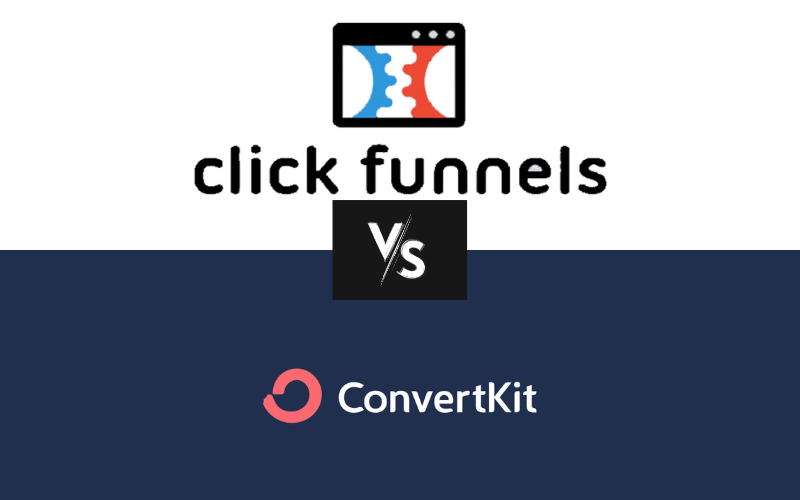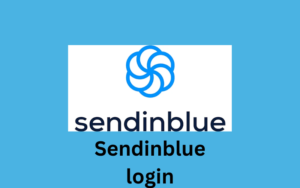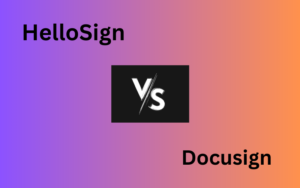Introduction:ClickFunnels vs Convertkit
In the dynamic landscape of digital marketing, the choice of the right tools can make all the difference. Today, we embark on a journey to compare two titans in the field: ClickFunnels and ConvertKit. Whether you’re navigating the intricacies of sales funnel creation or fine-tuning your email marketing strategy, understanding the strengths and nuances of each platform is essential. Join us as we dissect their pricing plans, features, ease of use, and more, aiming to empower you with the knowledge needed to make an informed decision for your marketing endeavors.
Table of Contents
Pricing Plans :ClickFunnels vs Convertkit
Choosing the right marketing tools often begins with an evaluation of pricing plans. Let’s delve into the pricing structures of ClickFunnels and ConvertKit to help you make an informed decision based on your budget and business needs.
ClickFunnels Pricing Plans
1. Basic Plan: ClickFunnels offers a Basic plan starting at $127 per month. This plan includes 20 funnels, 100 pages, and can cater to up to 10,000 visitors. It’s a suitable entry-level option for small businesses and individuals.
2. Platinum Plan: Priced at $208 per month, the Platinum plan expands the offerings with unlimited funnels, pages, and visitors. It also includes additional features such as Follow-Up Funnels and Backpack, making it ideal for scaling businesses.

ConvertKit Pricing Plans
1. Free Plan: ConvertKit offers a Free plan with limited features suitable for beginners and those with a smaller audience.
2. Creator Plan: The Creator plan, starting at $9 per month, is designed for creators and businesses with up to 1,000 subscribers. It includes core features like email broadcasts, automation, and customizable forms.
3. Creator Pro Plan: Priced at $25 per month, the Creator Pro plan extends the subscriber limit to 3,00 and adds advanced features such as Facebook custom audiences and subscriber scoring.
4. Free Migration: ConvertKit provides free migration assistance for users switching from another platform, making the transition smoother.

Features Comparison :ClickFunnels vs Convertkit
When deciding between ClickFunnels and ConvertKit, a detailed examination of their features is crucial. Let’s compare the key functionalities of both platforms to help you identify which aligns better with your marketing goals.
ClickFunnels Features
1. Sales Funnel Building: ClickFunnels excels in creating sales funnels with its intuitive drag-and-drop editor. It provides templates and customization options to streamline the process, catering to businesses focused on converting leads into customers.
2. Landing Page Creation: The platform offers robust landing page creation tools, allowing users to design visually appealing and high-converting pages. Customization options ensure your brand is consistently represented across all touchpoints.
3. A/B Testing: ClickFunnels supports A/B testing, enabling users to experiment with different elements of their funnels and optimize for higher conversions. This feature is valuable for refining your marketing strategy based on real-time data.
4. Automation Workflows: Automation is a strong suit of ClickFunnels. It allows users to set up complex automation workflows, ensuring personalized and targeted interactions with leads at various stages of the funnel.

ConvertKit Features
1. Email Marketing Automation: ConvertKit is renowned for its email marketing automation capabilities. It simplifies the creation of automated sequences, making it easy to nurture leads and engage subscribers with relevant content.
2. Subscriber Tagging and Segmentation: ConvertKit emphasizes subscriber tagging and segmentation, providing granular control over your audience. This ensures that you can tailor your messages to specific segments, enhancing the personalization of your campaigns.
3. Customizable Forms: The platform offers customizable forms to capture leads effectively. Whether embedded on your website or as standalone pages, ConvertKit’s forms are designed to increase subscriber sign-ups.
4. Visual Automations: ConvertKit’s visual automation builder provides a clear and intuitive interface for designing complex automation sequences. This feature is advantageous for marketers looking to visualize and optimize their email workflows.

Ease of Use :ClickFunnels vs Convertkit
The user-friendliness of a marketing platform is a critical factor in its adoption and efficiency. Let’s explore the ease of use for both ClickFunnels and ConvertKit to help you determine which aligns better with your workflow and preferences.
ClickFunnels Ease of Use
1. Intuitive Interface: ClickFunnels is designed with a user-friendly and intuitive interface. The dashboard provides a clear overview of your funnels, and the drag-and-drop editor simplifies the process of creating sales funnels and landing pages, making it accessible to users with varying levels of technical expertise.
2. Guided Funnel Creation: The platform guides users through the funnel creation process, reducing the learning curve. With pre-designed templates and step-by-step instructions, even beginners can navigate the platform confidently.
3. Learning Resources: ClickFunnels offers a wealth of learning resources, including tutorials, webinars, and a supportive community. This ensures that users can quickly grasp the functionalities and optimize their use of the platform.

ConvertKit Ease of Use
1. Simplified User Interface: ConvertKit stands out for its straightforward and simplified user interface. The dashboard provides a clean and organized layout, making it easy for users to navigate and access key features without unnecessary complexity.
2. User-Friendly Email Editor: The email editor in ConvertKit is designed for ease of use. Users can create and customize emails with a simple and intuitive editor, eliminating the need for extensive coding knowledge.
3. Minimal Learning Curve: ConvertKit’s emphasis on simplicity results in a minimal learning curve. Users can quickly understand the platform’s features, allowing for a swift onboarding process and efficient use of the email marketing tools.

Sales Funnel Building Capabilities :ClickFunnels vs Convertkit
Creating effective sales funnels is at the core of successful online marketing strategies. Let’s examine the sales funnel building capabilities of both ClickFunnels and ConvertKit to help you determine which platform aligns best with your funnel-building needs.
ClickFunnels Sales Funnel Building
1. Drag-and-Drop Editor: ClickFunnels boasts a powerful drag-and-drop editor, allowing users to build sales funnels with ease. The intuitive interface enables you to customize each step of the funnel, from landing pages to checkout processes, without the need for extensive coding skills.
2. Pre-Built Templates: ClickFunnels provides a variety of pre-built funnel templates, catering to different business models and goals. These templates serve as a starting point, significantly reducing the time and effort required to create effective sales funnels.
3. Funnel Blueprints: For users new to funnel creation, ClickFunnels offers funnel blueprints that guide you through the entire process. These blueprints provide step-by-step instructions, ensuring that you don’t miss crucial elements in your funnel design.
ConvertKit Sales Funnel Building
1. Sequences and Automations: ConvertKit focuses on simplicity in its approach to sales funnels. Users can create sequences and automations to guide subscribers through a series of targeted emails, nurturing them through the sales process.
2. Visual Automation Builder: ConvertKit’s visual automation builder provides a clear and visual representation of your sales funnel. You can design intricate sequences, set triggers, and customize the customer journey with an intuitive interface.
3. Landing Page and Form Integration: While not as robust as ClickFunnels, ConvertKit allows users to create simple landing pages and integrate forms seamlessly. This provides a streamlined approach to capturing leads and moving them through your funnel.

Email Marketing Features :ClickFunnels vs Convertkit
Effective email marketing is the cornerstone of engaging with your audience and driving conversions. Let’s explore the email marketing features offered by both ClickFunnels and ConvertKit, helping you make an informed decision for your email campaigns.
ClickFunnels Email Marketing Features
1. Email Campaign Creation: ClickFunnels enables users to create and send email campaigns seamlessly. The platform’s drag-and-drop editor extends to email creation, allowing for visually appealing and personalized campaigns.
2. Actionetics: ClickFunnels includes Actionetics, its built-in email marketing tool. With Actionetics, users can automate email sequences, segment subscribers, and track the performance of their email campaigns.
3. Follow-Up Funnels: Follow-Up Funnels, available in the Platinum plan, is ClickFunnels’ advanced email marketing feature. It allows for sophisticated automation, including behavioral triggers and dynamic email content, enhancing your ability to nurture leads.

ConvertKit Email Marketing Features
1. Subscriber Tagging and Segmentation: ConvertKit excels in subscriber tagging and segmentation, enabling users to categorize their audience based on behaviors and preferences. This ensures that emails are highly targeted and relevant.
2. Automation Sequences: The platform emphasizes automation sequences, allowing users to create automated workflows based on subscriber actions. This feature is valuable for nurturing leads and maintaining engagement.
3. Broadcast Emails: ConvertKit’s straightforward approach includes the ability to send broadcast emails to your entire list or specific segments. The platform’s focus on simplicity ensures that even beginners can easily manage their email campaigns.
Integration and Compatibility :ClickFunnels vs Convertkit
The ability of a marketing platform to seamlessly integrate with other tools is crucial for a streamlined workflow. Let’s explore how ClickFunnels and ConvertKit fare in terms of integration and compatibility, ensuring that your marketing stack works harmoniously.
ClickFunnels Integration and Compatibility
1. Extensive Third-Party Integrations: ClickFunnels offers an extensive array of third-party integrations. From popular CRM systems to payment gateways and webinar platforms, ClickFunnels ensures compatibility with the tools you already use in your business operations.
2. Zapier Connectivity: For even greater flexibility, ClickFunnels integrates seamlessly with Zapier. This opens up a world of possibilities, allowing you to connect your marketing efforts with thousands of other apps and automate workflows that may not have direct integration.
3. Webinar Integration: ClickFunnels goes beyond basic integrations by offering seamless connectivity with webinar hosting platforms. This is particularly beneficial for businesses leveraging webinars as part of their marketing strategy.
ConvertKit Integration and Compatibility
1. Core Integrations: ConvertKit focuses on essential integrations, ensuring compatibility with key tools in the marketing landscape. While the list may not be as extensive as ClickFunnels, it covers the core needs of email marketers.
2. Simplified Zapier Integration: ConvertKit connects with Zapier, simplifying the process of integrating with a wide range of apps. This flexibility allows users to expand their marketing capabilities by connecting ConvertKit with other business tools.
3. E-commerce Platform Integration: ConvertKit offers integration with e-commerce platforms, allowing businesses to seamlessly connect their email marketing efforts with online stores. This is advantageous for those with a significant e-commerce focus.
Customer Support and Reviews :ClickFunnels vs Convertkit
In the realm of marketing platforms, reliable customer support is a pillar that ensures smooth operations. Let’s delve into the customer support offerings and user reviews for both ClickFunnels and ConvertKit to gauge their commitment to user satisfaction.
ClickFunnels Customer Support
1. 24/7 Live Chat and Email Support: ClickFunnels understands the importance of timely assistance. With 24/7 live chat and email support, users can reach out at any hour, ensuring quick responses to queries and efficient problem resolution.
2. Extensive Help Center: The platform hosts an extensive Help Center, offering a repository of articles, tutorials, and guides. Users can find answers to common questions and troubleshoot issues independently, empowering them to make the most of ClickFunnels features.
3. Online Community: ClickFunnels fosters an active online community where users can engage with each other, share insights, and seek advice. This collaborative space serves as a valuable supplement to official support channels.
4. User Reviews: Positive reviews highlight the effectiveness of ClickFunnels’ customer support, especially the responsiveness of the live chat and the depth of information available in the Help Center. Users appreciate the platform’s commitment to assisting them at every stage.
ConvertKit Customer Support
1. Ticket-Based Support System: ConvertKit operates on a ticket-based support system, allowing users to submit inquiries and receive assistance. While it may not offer real-time support like live chat, it ensures that each query is tracked and addressed.
2. Knowledge Base and Resources: Similar to ClickFunnels, ConvertKit provides a knowledge base and resources section. Users can access tutorials and FAQs to find answers to common queries and gain insights into utilizing the platform effectively.
3. User Reviews: User reviews for ConvertKit commend the ticket-based support for its effectiveness in resolving issues. The platform is recognized for its commitment to assisting users through the support ticket system.
Conclusion:ClickFunnels vs Convertkit
As we draw the curtain on our comparison between ClickFunnels and ConvertKit, it’s evident that both platforms offer unique strengths catering to distinct marketing needs. Let’s recap the key findings to guide you in making an informed decision based on your business requirements.
ClickFunnels Highlights:
- Robust Sales Funnel Capabilities: ClickFunnels excels in providing a powerful and intuitive platform for building sales funnels, offering a variety of templates and a user-friendly drag-and-drop editor.
- Extensive Features for Marketers: With features like A/B testing, Follow-Up Funnels, and comprehensive integration options, ClickFunnels empowers marketers to create sophisticated campaigns.
- Active Community and Support: The platform’s commitment to customer support is evident through 24/7 live chat, a rich Help Center, and a vibrant online community, fostering collaboration and problem-solving.
ConvertKit Highlights:
- Simplified Email Marketing: ConvertKit stands out for its straightforward and easy-to-use email marketing features, with a focus on automation sequences and subscriber tagging.
- Subscriber-Centric Approach: The platform’s emphasis on subscriber segmentation ensures targeted and personalized communication, enhancing engagement and conversions.
- Efficient and Responsive Support: ConvertKit’s ticket-based support system effectively addresses user queries, and the platform is commended for its commitment to user assistance.
Making Your Decision:
- Consider Your Marketing Goals: If your emphasis is on sales funnel creation and advanced marketing features, ClickFunnels may be the ideal choice.
- Prioritize Simplicity: If you prioritize a simplified approach to email marketing and subscriber management, ConvertKit provides an efficient solution.
- Evaluate Your Budget: Compare pricing plans and features to align with your budget while ensuring you have the necessary tools for your marketing strategy.
- Explore User Reviews: Consider user reviews and testimonials to gain insights into the real-world experiences of businesses similar to yours.
In conclusion, the choice between ClickFunnels and ConvertKit hinges on your specific marketing objectives, preferences, and budget constraints. We hope this comparison has provided valuable insights to guide you toward a decision that aligns seamlessly with your business goals.





